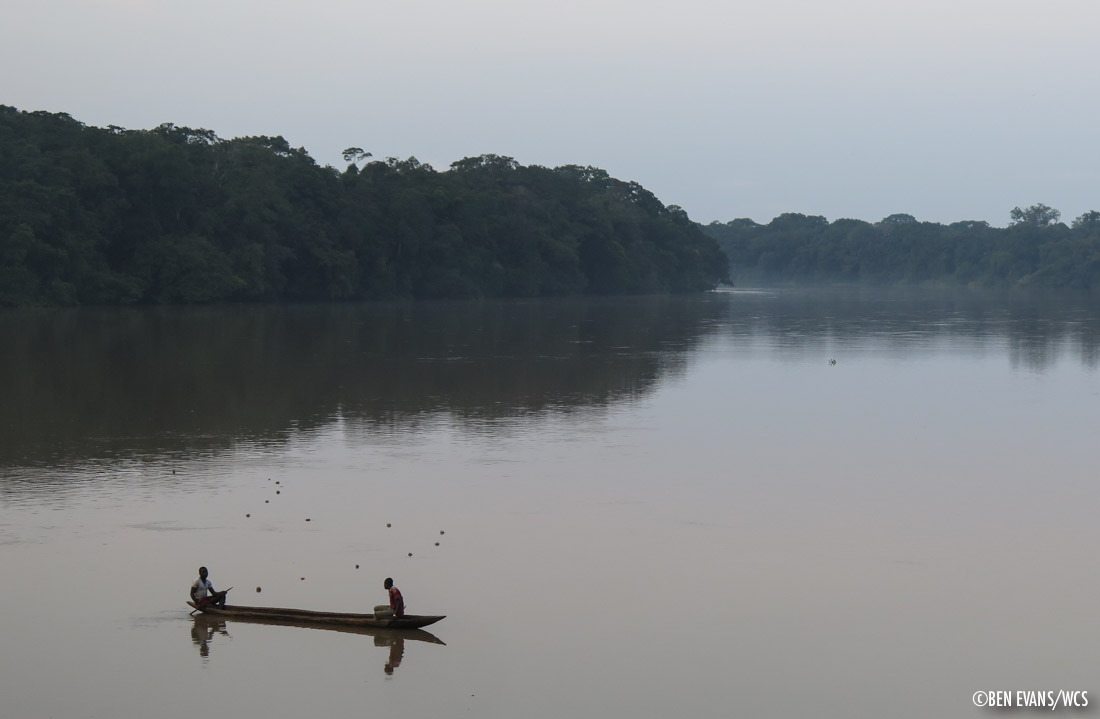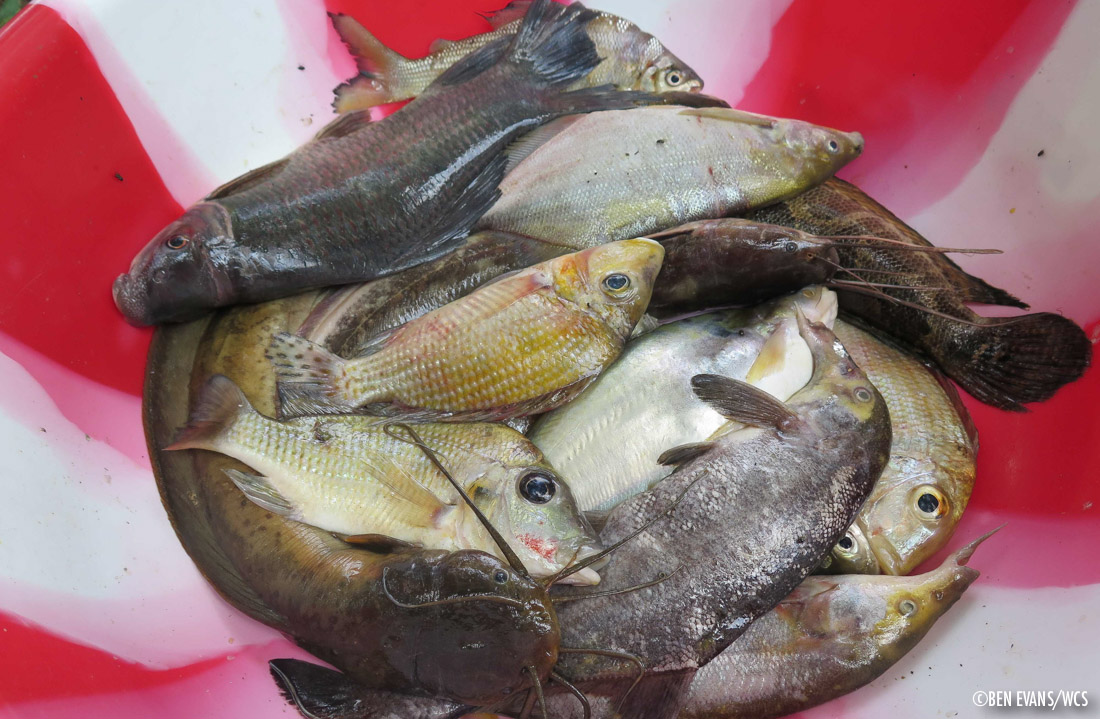
Fishing for change
“Mbese, ngolo, nzombo, mbenga…”: Nicolas lifts each fish up in turn, sounding out its rounded Lingala names before adding it to the growing pile in our bright plastic bowl. Finding 10 species in one catch, he says, is normal for this area. WCS-led surveys have so far identified around 170 species of fish from the Sangha River, the great, green ribbon winding through North Congo’s forests. The Ndoki river, namesake of Nouabalé-Ndoki National Park, of which it forms the southern boundary, has never been surveyed for its fish fauna. Smaller, black-watered, it also harbours hippopotamus and all three African crocodile species.
”Months with high fish supply in key towns within the landscape were the lowest periods of bushmeat consumption, showing that protecting the fish supply, ensuring its long-term existence, will also be key in providing a buffer against the intense pressure for bushmeat in the region.
Overfishing is a problem better known in marine systems, but it affects rivers and lakes just the same. With human populations growing in northern Congo, boosted by immigration for work in logging towns in the heart of the forest, both fishers and conservationists working in the area are concerned that pressure on fish stocks may be increasing, threatening the long-term integrity of this important resource.

In a region with little agriculture, fishing is also a key provider of income and food. Months with high fish supply in key towns within the landscape were the lowest periods of bushmeat consumption, showing that protecting the fish supply, ensuring its long-term existence, will also be key in providing a buffer against the intense pressure for bushmeat in the region.
This past year the fisheries team in Nouabalé-Ndoki have been taking the first steps towards managing this resource. We’ve surveyed over 300 fishermen and women, held community meetings and called in government representatives to talk through the issues and opportunities fishing presents in such a key conservation landscape. Working with groups of fishers, supporting those who agree to certain conservation conditions, such as net size limits, or cooperation with anti-poaching operations in the remoter stretches of river could provide a sustainable solution to the challenges facing fish around the park.

